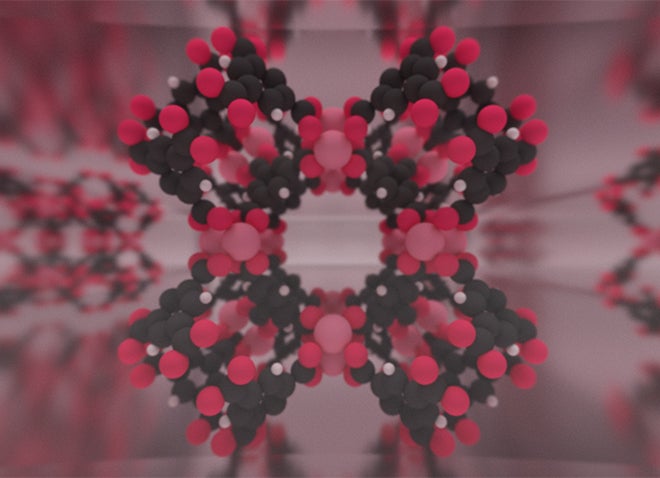
Subscribe to Pittwire Today
Get the most interesting and important stories from the University of Pittsburgh.Pitt-led Study Models Technology to Make Carbon Dioxide Capture More Efficient
A new study from researchers at the University of Pittsburgh and the U.S. Department of Energy could help speed up carbon-capturing devices for coal power plants, which could reduce the release of harmful quantities of carbon dioxide into the air and have the added benefit of bringing down energy costs.
“Greenhouse gas emissions like carbon dioxide (CO2) are a significant contributor to global warming, which is a looming catastrophe,” said Chris Wilmer, assistant professor of chemical and petroleum engineering in Pitt’s Swanson School of Engineering. “Developing technologies that can be retrofit onto power plants that use fossil fuels like coal so they don’t emit greenhouse gases are urgently needed.”
Wilmer’s team has developed a computational modeling method that shows how metal-organic frameworks — highly porous crystalline materials embedded in a polymer microstructure — could act like a sponge or mop to capture CO2 and filter unwanted gases from coal plants.
“The exhaust of a coal power plant consists of many different gases, like nitrogen, oxygen and CO2,” Wilmer said. “The idea is to find a ‘mop’ that strongly interacts with some of those gases and not others, so you can purify the exhaust.”
Coal-generated power plants currently represent about 30 percent of nation’s energy portfolio, but they contribute the largest share of of CO2 emissions in the entire U.S. electric power sector, according to the U.S. Energy Information Administration.
Current technologies to filter out CO2 use a process called amine scrubbing in which exhaust containing CO2 passes through a liquid solvent, where it’s trapped.
“It works, but it’s expensive, and there is interest in creating an energy-efficient and cost-efficient technology,” Wilmer said. “There are price estimates that say this amine scrubbing process costs anywhere between $70 and $100 per ton.”
In contrast, the simulated carbon filter Wilmer’s team modeled would bring costs down to less than $50 per ton of CO2 removed.
“We used a lot of computer simulations to consider millions of different carbon filtration membranes,” said Wilmer. “We identified a handful that, in principal, can capture carbon emissions more effectively and at a lower cost than current technologies.”
The Wilmer Lab focuses on manipulating gases, including storage and filtration of the gases, as well as designing materials to support these manipulations. The research team reached out to the U.S. Department of Energy’s National Energy Technology Laboratory for this research.
“They have a strong focus on carbon capture research,” Wilmer said. “So, we combined our expertise to produce a simulated carbon capture filter.”
If the computer model is translated into a physical filter, researchers envision it to be an apartment-building-sized unit capturing exhaust from coal power plants, thereby preventing CO2 from entering the Earth’s atmosphere. The pure CO2 would come out of a different exhaust that would be pumped underground and made usable again for coal plants.
Other researchers in this project include co-investigator Jan Steckel, research scientist at the National Energy Technology Laboratory; Samir Budhathoki, research scientist at Battelle; and Olukayode Ajayi, research scientist at the National Energy Technology Laboratory.



